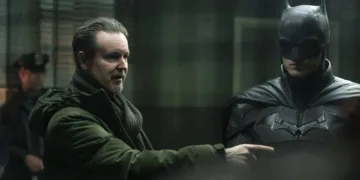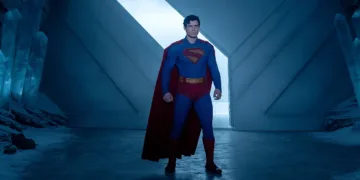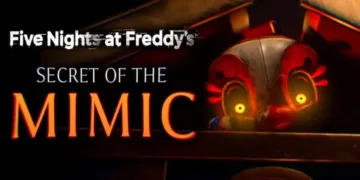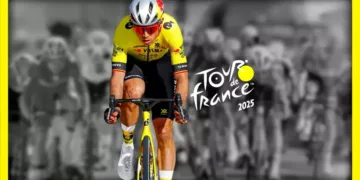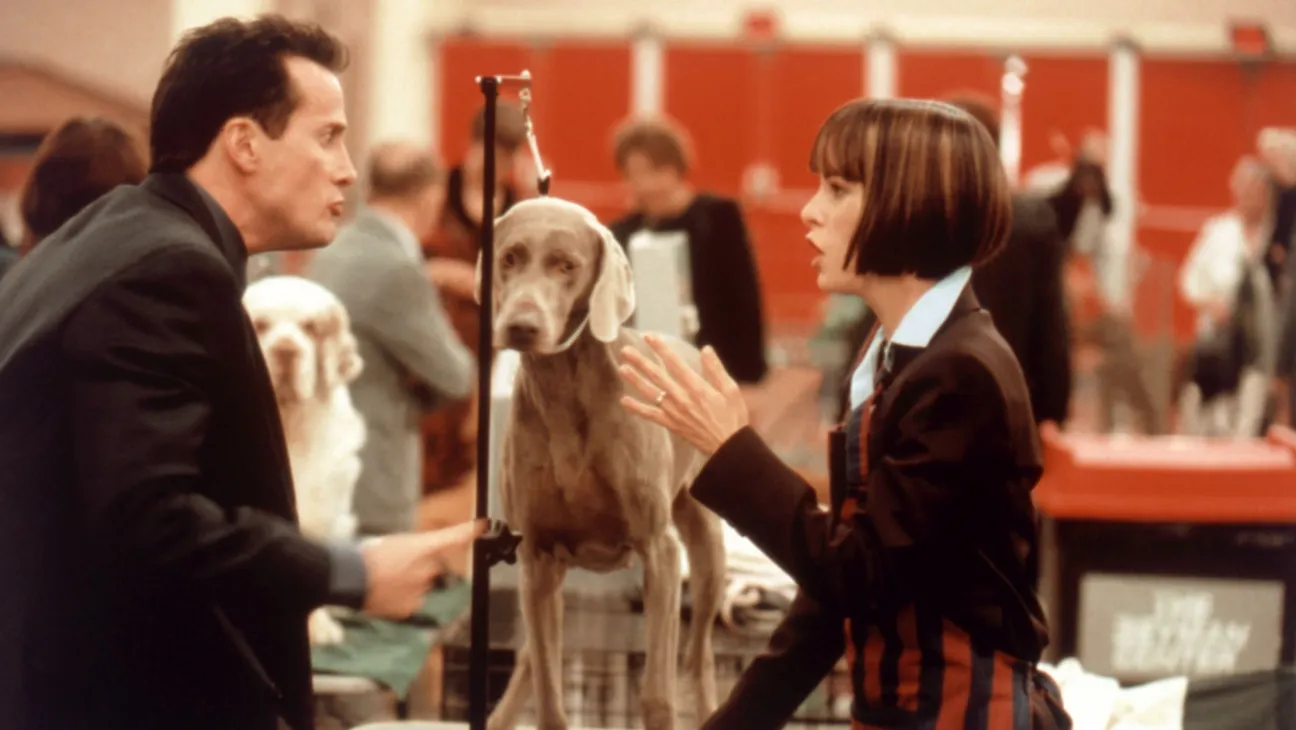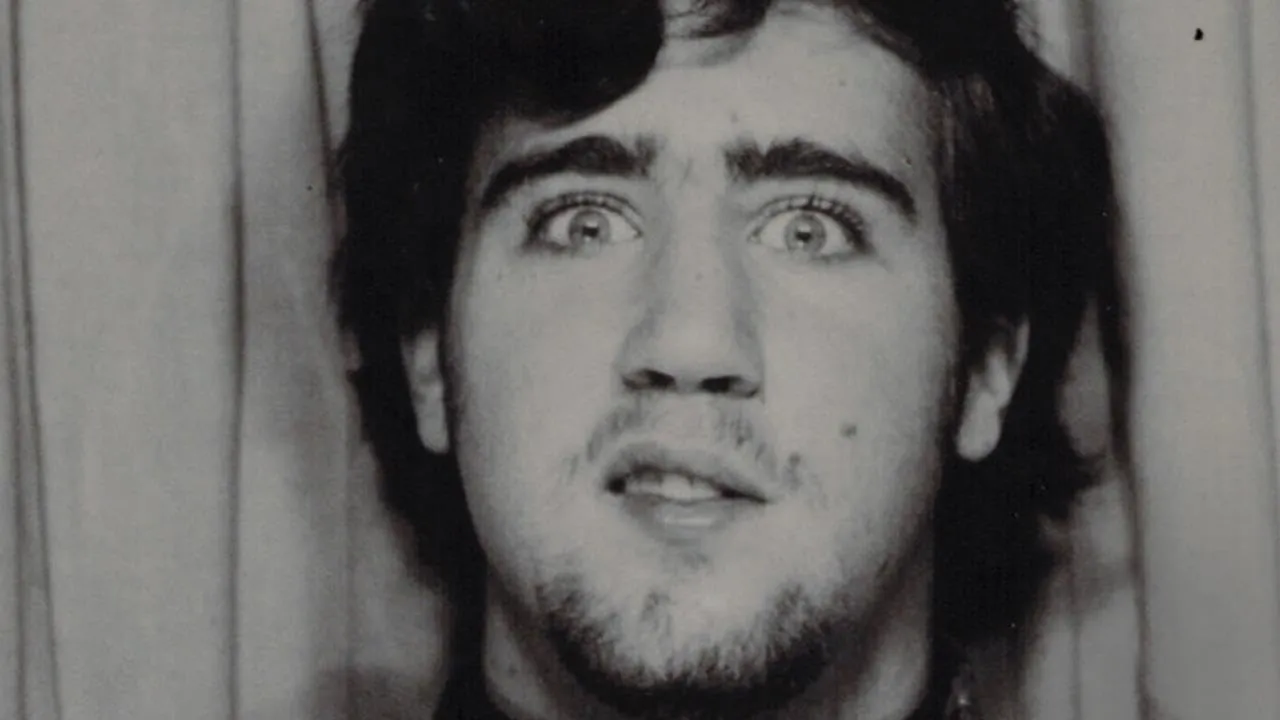How does one film a phantom? To create a definitive portrait of Andy Kaufman, a man whose life was a deliberate act of public mystification, is a fool’s errand. The biographical drama Andy Kaufman Is Me wisely avoids this trap. Instead of trying to “solve” him, the film presents a fractured, electrifying reflection of his spirit. It is an experimental work, blending factual history with surreal reenactments that mirror the subject’s own chaotic methods.
The atmosphere is immediately unsettling yet magnetic, throwing the viewer into a world where performance bleeds into reality with no clear demarcation. From its opening moments, the movie refuses to provide easy answers. It presents the audience with the essential puzzle of Kaufman’s brief, bright career: what happens when the mask becomes the face, and was there ever a distinction between the two to begin with?
The Performance of a Lifetime
The film’s weight rests on a central performance that is nothing short of a disappearing act. The actor tasked with playing Kaufman does not simply imitate; he channels an unnerving energy that feels both meticulously researched and dangerously spontaneous. His recreation of the innocent “Foreign Man,” with his wide, hopeful eyes and softly broken English, is a pitch-perfect study in vulnerability that made audiences want to protect him.
This makes the subsequent transformation into the belligerent lounge singer Tony Clifton all the more jarring. The actor achieves this not just with prosthetic makeup, but through a complete physical overhaul—a swaggering, pot-bellied gait and a voice coated in cheap whiskey and pure contempt. The film’s director uses jarring cuts to switch between these personas, often without transition, mirroring Kaufman’s own psychological whiplash.
In one quietly devastating scene, we see Kaufman alone in a dressing room after a particularly aggressive show as Clifton. He stares into the mirror, his face slack after removing the makeup, but his eyes still hold a flicker of the antagonistic persona, a residue of the performance that will not wash off. The camera holds on this image, refusing to offer a glimpse of the “real” Andy.
This choice is echoed in the film’s structure, which shatters linear chronology. It jumps between a reenacted childhood memory of him performing for an imaginary audience in his bedroom and an explosive on-stage meltdown years later.
This juxtaposition avoids simple psychological explanations, instead suggesting his entire life was a singular, unbroken performance. The visual style, a mix of grainy, archival-style footage and raw, handheld camera work, makes the viewer feel like an intrusive voyeur, complicit in the very act of watching that Kaufman both craved and despised.
The Anatomy of Anti-Comedy
The movie presents Kaufman not as a comedian but as an artist whose medium was the human emotional response, placing him in a lineage with disruptive international art movements like Dadaism, which sought to torpedo audience expectations.
His work, as depicted here, was less about punchlines and more about creating an authentic, often uncomfortable, experience. The film dedicates a significant portion to his tenure as the “Inter-Gender Wrestling Champion,” a stunt that baited audiences with unapologetic chauvinism.
The camera does not shy away from the genuine anger he provoked, focusing on the furious faces of women in the crowd. It forces us to question the intent. Is this a satire of toxic masculinity, or is it simply a man getting away with being abusive under the protection of performance?
The film explores this ambiguity further by recreating another of his infamous acts: reading The Great Gatsby to a restless nightclub audience. The scene is excruciatingly long. We see people shifting in their seats, heckling, and eventually leaving in droves.
A traditional biopic might frame this as a failure, but here it is presented as a triumph of artistic intent. Kaufman’s goal was not to entertain but to test the very contract between a performer and his audience. The film’s sound design in these sequences is masterful, amplifying the coughs, whispers, and scraping chairs until the ambient noise of displeasure becomes the main event.
We are not given the comfort of being in on the joke. The film makes it clear that with Kaufman, the audience was often the raw material for the art itself, a collaborator in an experiment they never agreed to join.
The Ghost in the Machine
Does the film locate the man beneath the many masks? It comes achingly close, suggesting his provocations stemmed from a deep-seated loneliness and a profound need for authentic, unfiltered reactions in a world he found suffocatingly fake. It paints a portrait of an artist so committed to blurring the lines that he may have ultimately lost himself in the process.
The film suggests his relationships were often extensions of his performance, leaving him isolated even when surrounded by people. His influence is positioned not just within comedy, but in the broader culture of performance.
He was a pioneer of a type of reality-bending entertainment that prefigured the rise of reality television and the internet prank culture, where the line between real and fake is constantly exploited for engagement. He is framed as a singular figure, a glitch in the system whose work cannot be easily replicated because it was so tied to his own unique, combustible psychology.
The final shot is a recreation of archival footage, showing Kaufman leaving a television studio. He looks back at the camera, not with a smile or a sneer, but with a completely blank expression. It is a look of profound emptiness, or perhaps, ultimate control.
The film does not provide closure; it leaves his ghost in the machine, honoring his legacy by ensuring the questions he raised about identity, celebrity, and the nature of truth continue to linger long after the credits roll.
Andy Kaufman Is Me is a 101‑minute documentary directed by Clay Tweel that premiered in the Spotlight Documentary section at Tribeca Film Festival, June 2025.
Full Credits
Director: Clay Tweel
Writers: Clay Tweel, Luis Lopez, Shannon E. Riggs
Producers and Executive Producers: Dwayne Johnson, Dany Garcia, Hiram Garcia, Brian Gewirtz, Ross Dinerstein, Shannon E. Riggs; Executive Producers: David Letterman, Tom Keaney, Clay Tweel, Ross Girard, Mark McCune, Paul Levesque, Chris Kaiser, Marc Pomarico, Tyler Kaufman, Tommy Avallone
Cast / Featured Interviewees: Michael Kaufman, Carol Kaufman, David Letterman, Carol Kane, Tim Heidecker, Eric André, Kristin Schaal
Director of Photography (Cinematographer): David Bolen
Editor: Luis Lopez
Composer: Ryder McNair
The Review
Andy Kaufman Is Me
A daring and unconventional biopic that refuses easy answers. Powered by a mesmerizing central performance and a fractured narrative, the film is a challenging, unsettling, yet brilliant reflection of its enigmatic subject. It doesn't just depict Andy Kaufman; it immerses you in his chaos, making it essential viewing for those who appreciate audacious filmmaking.
PROS
- A magnetic and transformative central performance.
- Bold, non-linear structure that mirrors Kaufman's psychology.
- Successfully captures the unsettling spirit of his anti-comedy.
- Thought-provoking exploration of identity and performance.
CONS
- Its experimental nature may alienate viewers seeking a conventional story.
- Intentionally lacks closure, which can be frustrating.
- The tone is consistently unsettling and uncomfortable.
















